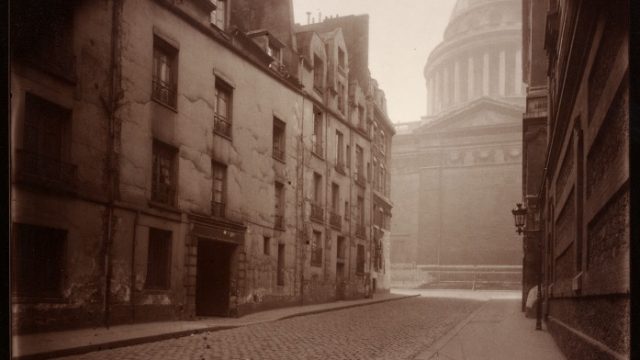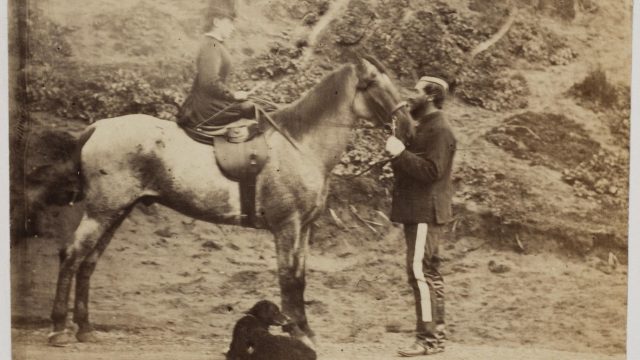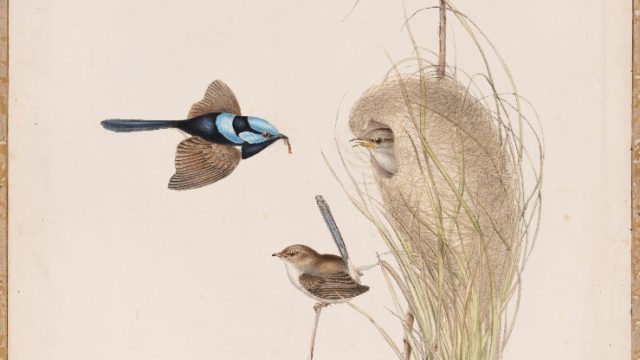Since the inaugural show in 1984, London Fashion Week has been one of the premier occasions on the fashion calendar. This bi-annual event is the second of the ‘Big 4’ fashion shows, following New York, and preceding Milan and Paris. From the 14th-18th of February, the finest British designers, including Mulberry, Matthew Williamson and Peter Pilotto will dictate what we will wear next winter (if the current one ever ends), with their designs for Autumn/Winter 2014.
The V&A has one of the finest historical and contemporary clothing collections in the world, and staged its first exhibition dedicated to clothing in 1958, with a centenary exhibition in honour of the House of Worth. Our fashion collection has continued to grow and the recent opening of the Clothworkers Centre has provided our collection with a lovely, state-of-the-art, new home. The Word and Image Department looks after the designs for many of London’s most influential designers of days gone by, such as Norman Hartnell and Marjorie Field, a few of which I will share with you today.
Sir Henry Lee, Jacob Halder, 1557-1587. Museum no. D.599&A-1894. © Victoria and Albert Museum, London.
This design, although not typical of what you might see on the London catwalk, illustrates what the fashionable Elizabethan man sought to wear in battle. Taken from the Almain Armourers album, this particular design was for Sir Henry Lee, Master of the Armouries from 1578-1611. The extravagance of Elizabethan fashion is reflected in the tassets (thigh protectors). They billow from the waist, reflecting the popular, layered appearance of Elizabethan court dress. The book reads as something of a who’s-who of the Elizabethan court, also featuring designs for the rumoured lover of Queen Elizabeth, Sir Christopher Hatton!
Fashion design, Colette Massignac, 1946. Museum no. E.22482-1957. © Victoria and Albert Museum, London.
This watercolour sketch by Colette Massignac for the House of Paquin’s Spring/Summer 1946 collection is, perhaps, more recognisable as a fashion design. The continuing austerity of the post-war period is reflected in the simple cut, and lack of excess fabric.
Fashion plate, Jules David, 1860. Museum no. E.267-1942. © Victoria and Albert Museum, London.
Fashion plates were very popular in the Victorian period. A forerunner to the modern advertising campaigns which grace the pages of Vogue, they began to feature heavily in women’s magazines in the nineteenth century, showcasing the latest trends. These dresses are typical of the 1860s. Illustrating how comfort and fashion have rarely mixed, crinolines, skirt-shaped cages of steel which attached to the tightly corseted waist, were all the rage. The lightweight structure of the crinoline made them extremely popular, as they eliminated the need for layers of heavy petticoats. However, with diameters reaching 6ft, they were extremely difficult to manoeuvre, and almost impossible to sit down in!
Design, Anna Maria Garthwaite, 1747. Museum no. 5985:31. © Victoria and Albert Museum, London.
Houses now often mix the fabric and garment design; Burberry is as well known for its checked pattern as it is for its trench coats. Prior to the twentieth century however, the two were entirely separate. Wealthy women selected fabric, and had a separate dressmaker design and create a dress. Anna Maria Garthwaite was one of the leading pattern designers of the early eighteenth century, and was fascinated by flowers and natural forms. Several of her designs are currently on display at the Garden Museum, in their exhibition ‘Fashion & Gardens‘.

Emanuel Ungaro, Haute Couture Fitting Rooms, Jacqueline Hassink, 2003. Museum no. E.545-2005. © Victoria and Albert Museum, London/Jacqueline Hassink.
This photograph may look like an ordinary changing room. It happens to be the changing room of Emanuel Ungaro’s showroom in Paris. In her series of photographs entitled ‘Haute Couture Fitting Rooms’, photographer Jacqueline Hassink explored the relationship between the private space of the fitting room where famous clientele perfect their public persona. The huge mirror and sumptuous curtains create a sense of entrapment in luxury.
The V&A has two fashion related exhibitions coming up, ‘The Glamour of Italian Fashion 1945 – 2014‘, and ‘Wedding Dresses, 1775-1914’. Make sure to book your tickets, and while you’re here, come and see some of the designs in the Prints and Drawings Study Room. Enjoy Fashion Week!






